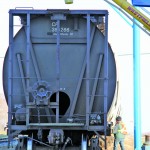Railways mum on how producer car orders are allocated when total car demand exceeds supply When rail car orders exceed the supply how do the railways decide how many cars are set aside to fill producer car versus grain company orders? Only the railways know for sure and last week they were not answering the





